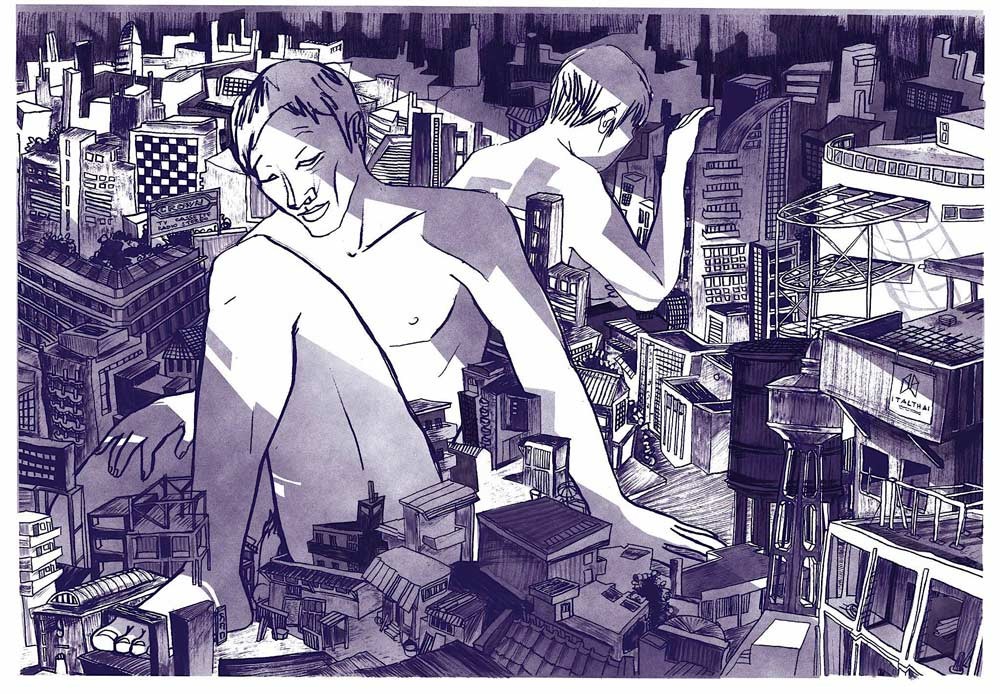A remarkable documentary filmed over ten years provides an intimate look into the lives of Isaan women who moved abroad to marry foreign men but stayed deeply connected to their village homes. Defying widespread stereotypes of the mia farang (foreigner’s wife), the film offers a fresh and nuanced view on female migrants and transnational marriages.
Some 25 years ago, a woman named Sommai helped form an unlikely network linking Northeast Thailand with the sparsely populated region of Thy in northern Denmark. Becoming a matchmaker for the women of her rural village, she kicked off a migration trend that tied together over 900 Thai-Danish couples.
Filmed over ten years, Heartbound follows the lives of Sommai and five other Isaan women as they struggle to navigate a web of expectations, desires, and inequalities spanning across continents.
The documentary by Danish anthropologist Sine Plambech and filmmaker Janus Metz world-premiered at the Toronto Film Festival last year and is screening across Thailand this week.
While the film revolves around family, relationships, and love, it also works as a powerful rebuttal to Thai society’s common perception of Isaan female migrants as immoral materialists or ignorant victims of human trafficking. At the same time, it humanizes the foreign men who are often derided and condemned in their home countries for their relationships with these women.

Sommai Molbaek went from sole provider of a family of eight to sex worker in Pattaya, marriage migrant, factory worker in Denmark, and transnational matchmaker.
From sex worker to successful migrant
Heartbound’s multi-character narrative is held together by Sommai, a compassionate woman in her fifties whose sad eyes tell of loss and hardship. At the age of 33, she took a decision that would change not only the course of her own life but also that of hundreds of other women.
Born into poverty in rural Khorat, Sommai became the sole provider for eight children after her sister’s untimely death. Left with few choices, she turned to selling sexual services to foreign men in one of Pattaya’s bars. There she met a 48-year-old Dane named Niels who was on “a fun vacation” seeking to cure his loneliness after a divorce. The two agreed to get married and Sommai followed him to Denmark. She began working in a factory and was able to send money back home to support her family.
From migrant to matchmaker
Thirteen years later, when the film begins in 2006, Sommai has built a life in Denmark while also providing for her family she left behind in Isaan. Her unequal relationship with Niels seems to have grown into genuine love or at least a dedicated partnership.
But Heartbound’s fascination with Sommai stems not from the story of a sex-worker-turned-successful migrant but from her role as a transnational matchmaker. From her Danish home, she links lonely local men with impoverished Isaan women whose lives she becomes deeply involved with.
In a recent interview with The Isaan Record, Sommai said she never charged a commission for her service. She paid visa fees and flight tickets for the women out of her own pocket and the male suitors paid her back later.

Kae and Kjeld with their son. Sommai found Kjled through a newspaper ad and introduced him to her niece Kae.
Over the film’s 90 minutes, viewers are introduced to three other Thai-Danish couples, all paired up by Sommai, including two of her own nieces, Mong and Kae.
Kae arrives in Denmark on a three-month tourist visa looking nervous but determined to carry out her mission to find a husband. Sommai has already arranged a meeting for her with Kjeld, a Danish suitor equipped with “sufficient funding” as Niels insisted in a scene showing the pair pore over the wording of a classified ad.
Kae and Kjeld’s first meeting oozes the awkwardness of two strangers coupled through an arranged marriage scheme intensified by cultural and linguistic barriers. But eventually, Kae tells Sommai, Kjeld “is good enough” to become her husband. Before leaving behind her family in Thailand, she promises to bring her eleven-year-old son, Mark, over to Denmark.
He throws her a long sceptical stare and says, unconvincingly: “If you want me to go, I’ll go.”
Fast forward seven years, Mark is living with Kae, her husband Kjeld and their three-year-old son. Fluent in Danish, Mark is training to become a chef and yet struggles to fit in and find new friends.
Meanwhile, the marriage of Basit and Frank, another couple that Sommai brought together, is falling apart. Basit had come to Denmark after leaving her abusive Thai husband. But in her new life in the Danish countryside, she grew isolated and unhappy with a husband who did not understand why she kept sending money back to Thailand.
After the two get divorced, Sommai takes heartbroken Frank under her wing and takes him to Thailand to make a fresh start with a new partner. In these scenes, Sommai is shown to care as much for lonely Danish men as she does for disadvantaged Isaan women.

Lom and Saeng (left and middle) find work in Pattaya’s nightlife industry, catapulting them on life paths that could not be more different.
Sommai’s early life in Thailand is mirrored in that of two young women from her village. Lom and Saeng hail from similarly impoverished families, and like Sommai, they choose Pattaya’s nightlife business over low-paid work as day laborers. “What else can you do when you have no money?” Sommai tells Saeng as she visits her in Pattaya. “If you work in the fields, you won’t meet any foreigners,” pointing out it is the lack of opportunities that women like these are confronted with.
As Saeng follows Sommai’s footsteps and moves to Finland, Lom is forced to return to her village empty-handed where she struggles to earn a living wage as a farm worker while having to take care of her sick mother.
Lom’s fate gives a rare insight into what awaits when the dream of a foreign husband does not come true. She returns to the harsh reality of a life in poverty and deep-rooted social expectations to be providers and caretakers that many Isaan women have to face throughout their lives.

The women in Heartbound take hard decisions to provide for their families and to better their lives.
The stories of Sommai and the other women in Heartbound are variations of a well-worn tale that sits at heart of the moral outrage often directed at Thai women from rural backgrounds who seek an escape from poverty through unconventional means–be it sex work, migration, or marriage to a foreign man.
Even seasoned Sommai cannot completely free herself from the stigma often attached to women like her. In one scene she asks, “Do you think that girls who used to be prostitutes will go to hell when they die?”
Heartbound counters these widely-held prejudices with a nuanced and intimate inquiry into how women at the bottom rung of Thai society navigate a complex web of inequalities, familial expectations, and desires for a fulfilled life. Most importantly and given the absence of women such as these in mainstream media coverage, the film manages to portray all of its characters, including the foreign husbands, with dignity and as humans.
The film is unique not only because it features marginalized women from the Northeast, who rarely get much screen time, and follows them for a decade, but also because it has the potential to stimulate multiple discussions about migration, gender roles, structural inequalities, and social welfare in Thailand.
It is remarkable that since the world premiere of the documentary, Sommai has transformed herself once again and is emerging as a powerful voice for the rights of Isaan women.
Heartbound is distributed in Thailand by Documentary Club and will be screening at Bangkok Screening Club and Lido Connect starting today. A special screening and discussion is organized at Khon Kaen University on 19 December.





